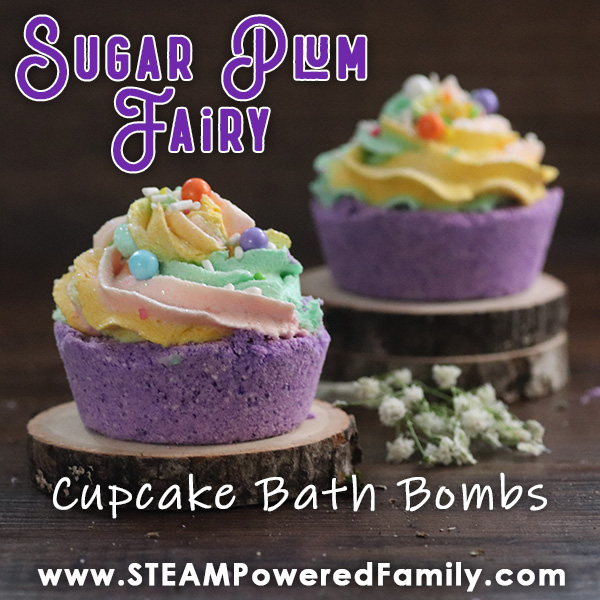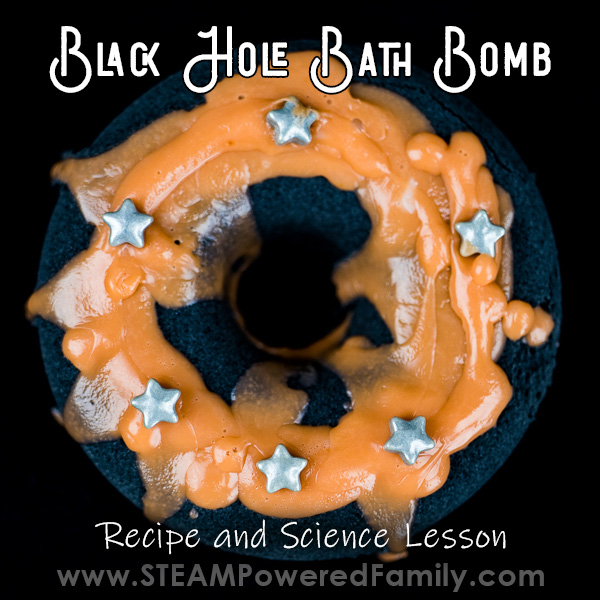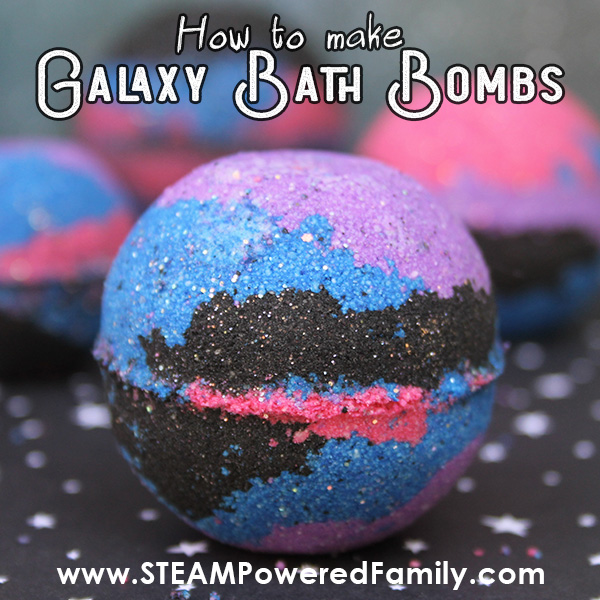Sweet DIY Orange Bath Bombs – Citric Acid Free Bath Bomb Recipe
One of the things that fascinates us most about bath bombs is the science behind them. So today we decided to try a new bath bomb recipe without citric acid. It was a fascinating experiment and created a much more natural bath bomb as we also chose to use a natural, plant based colorant, and natural orange for the scent.
ORANGE BATH BOMB RECIPE WITHOUT CITRIC ACID AND NO ARTIFICIAL COLOR or SCENTS
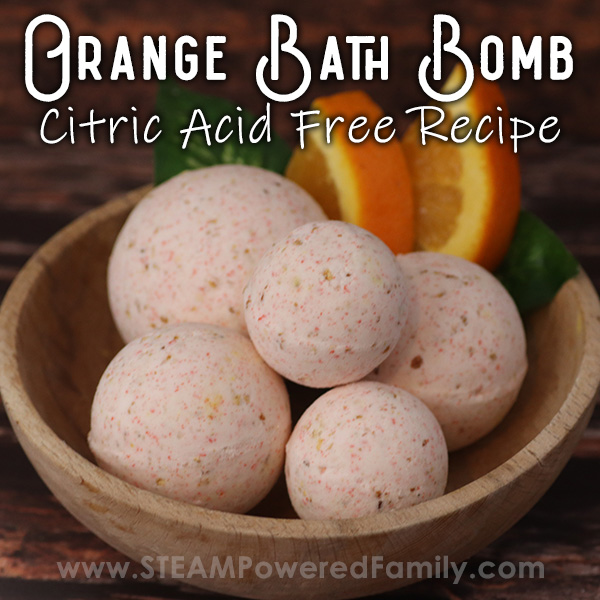
Disclaimer: This article may contain commission or affiliate links. As an Amazon Influencer I earn from qualifying purchases.
Not seeing our videos? Turn off any adblockers to ensure our video feed can be seen. Or visit our YouTube channel to see if the video has been uploaded there. We are slowly uploading our archives. Thanks!
When we started making bath bombs we learned a lot. The science behind them is absolutely fascinating and it got the kids really excited about learning chemistry and exploring chemical reactions. Especially when they erupt in bubbly bath time fun!
One of the highlights during any bath bomb making session is adding warm water to the left overs in the bowl to see how it bubbles.
We have our favourite recipe for Bath Bombs but recently we wondered about trying some recipe alternatives. Specifically we wondered about using natural colors and replacing the citric acid with something else.
AN ALTERNATIVE TO CITRIC ACID IN BATH BOMBS
If you have followed our bath bomb journey you already know that bath bombs fizz due to an acid-base reaction. In most of our recipes Citric Acid is the acid and Baking Soda is the base.
But, as you have probably discovered if you have tried this at home, Citric Acid likes to become airborne and can be quite irritating to the eyes and nose. This is especially true when kids are helping.
In the past I simply did the mixing until we added our liquids to the dry ingredients, so we contained the citric acid as much as possible, but we wondered if there might be an alternative.
Turns out there is, it’s Powdered Buttermilk.
Natural Orange Bath Bomb Supplies
2 cups baking soda
1 cup powdered buttermilk
1/4 cup cornstarch
1/3 cup coconut oil
10-20 drops orange essential oil (optional)
Dried orange peel
Natural Plant Based Colorant
Stainless steel bath bomb molds
Mini muffin tin (optional for the drying process)
1 microwave safe bowl
1 large mixing bowl
Optional – Polysorbate 80
THE ROLE OF POLYSORBATE 80
Polysorbate 80 is an emulsifier. This means it makes oil and water mix. Something they normally do not do. It is made from polyethoxylated sorbitan (chemical compounds derived from the dehydration of sugar alcohol) and oleic acid, a fatty acid found in animal and vegetable fats.
Since we are using a natural colorant, it should readily mix with the water without the need for an emulsifier. However, we still have Coconut Oil in the bath bombs which will float on top of the water if you chose not to use Polysorbate 80. The choice is yours if you decide to include Polysorbate 80 or not when making your bath bombs. There is no all natural emulsifier alternative that I have found for making bath bombs.
So it’s your choice to either let those oils float or not!
DIY BATH BOMBS WITHOUT CITRIC ACID
In a large mixing bowl, add the baking soda, buttermilk and cornstarch. Mix the dry ingredients together with a spoon or your hands.
In a microwave safe measuring cup melt the coconut oil using short intervals and stirring. Do not let it boil.
To the coconut oil add the orange essential oil and colorant. Start with 1 teaspoon of colourant if you are using my plant based one and a few drops if you are using the liquid and mix it in. If you wish to add polysorbate 80, now is the time to do it. 1 tablespoon should be sufficient.
Now add the liquids to the dry mix.
Mix everything together thoroughly. Use your hands to break down any lumps and make sure everything is mixed in (use gloves if desired). The mixture is perfect when it holds together when squished (kind of like our moon dough) and feels like wet sand.
Finally, mix in about a tablespoon of dried orange peel. If you wish a darker colour, add more colourant and mix it in.
Now it is time to pack the molds. This takes a bit of practice to master. Fill both sides of the mold with the mixture until they are loosely heaped (don’t press or pack, you want loose at this point). Press mold sides together and twist, ensuring the sides completely touch. Gently tap each side of the mold with your fingers and carefully release the bath bombs. To avoid the bombs breaking during the drying phase, I put them in a mini muffin tin. They fit perfectly!
Allow to dry a minimum of 24 hours. If your climate is wet or cold, allow an additional 24 hours. My rule of thumb is that when it is hard to the touch, they are ready for the tub! Store in an airtight container until ready for use.
USING BUTTERMILK INSTEAD OF CITRIC ACID IN BATH BOMBS
We are replacing a major ingredient in our bath bomb recipe by swapping citric acid for buttermilk. So how does it affect the bath bombs?
There are two main factors that are changed with this swap to buttermilk.
The first is that, if you are making your recipe with kids, dried buttermilk powder is a lot less irritating than citric acid. I have mentioned it so many times about how citric acid loves to get airborne, especially when enthusiastic kids are helping pour and mix, and it can be very irritating to your eyes and nose. With dried buttermilk powder this isn’t an issue.
So that’s a big positive.
But there is a big negative.
The reaction is a lot less exciting. A lot less. So much so, many kids will likely find it boring, especially if they are accustomed to the erupting crazy bubbly fun we normally get from our bath bombs.
Plus we found dried buttermilk more expensive.
It was an interesting experiment switching out the Citric Acid for Dried Buttermilk. We always love experimenting, learning and trying new things. So give this a try and see what you think about the differences!
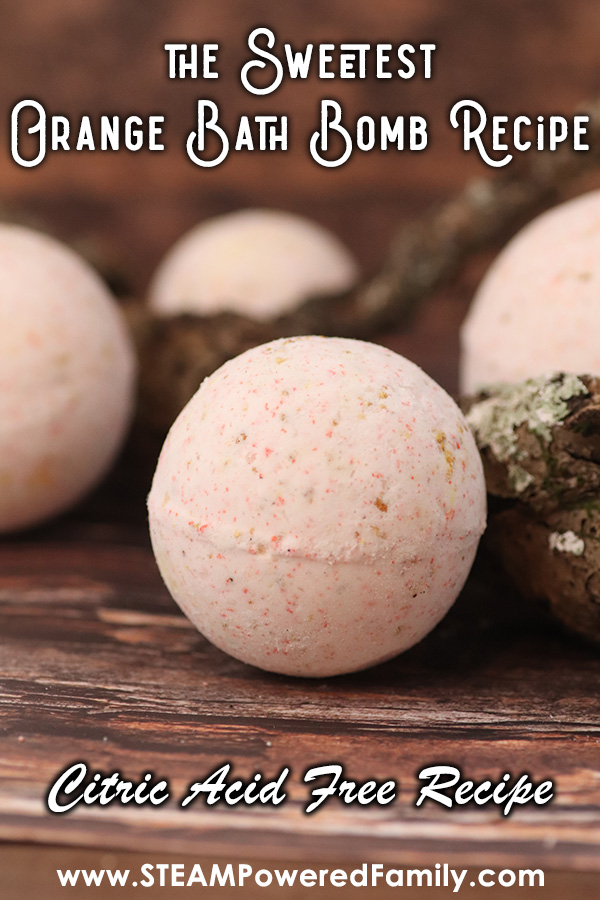
MORE BATH BOMB PROJECTS
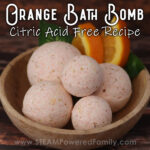
Orange Bath Bomb Recipe without Citric Acid
Try a new Bath Bomb recipe that doesn't use Citric Acid.
Supplies
- 2 cups baking soda
- 1 cup powdered buttermilk
- 1/4 cup cornstarch
- 1/3 cup coconut oil
- 10-20 drops orange essential oil
- 1 tbsp dried orange peel adjust amount as desired
- natural colourant
- 1 tbsp polysorbate 80 (optional)
Instructions
-
In a large mixing bowl, add the baking soda, buttermilk and cornstarch. Mix the dry ingredients together with a spoon or your hands.
-
In a microwave safe measuring cup melt the coconut oil.
-
To the coconut oil add the orange essential oil and colorant. Start with 1 teaspoon of colourant (if you are using my planet based one, or a few drops if you are using the liquid) and mix it in. If you wish to add polysorbate 80, now is the time to do it. 1 tablespoon should be sufficient.
-
Now add the liquids to the dry mix. Mix everything together thoroughly.
-
Finally, mix in about a tablespoon of dried orange peel. If you wish a darker colour, add more colourant and mix it in.
-
Pack the molds and form the bath bombs.
-
Let dry for 24 to 48 hours.











